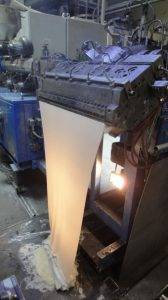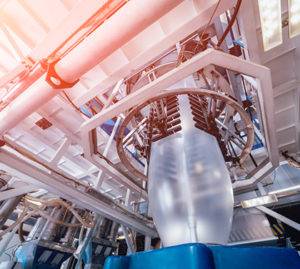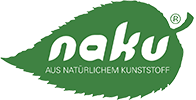
Production of natural polymers
Different procedures depending on the area of application
Depending on the area of application, there are various ways of processing natural plastic into any desired shape. Each process begins with the melting of the granules in a machine that works like a “heatable meat grinder”. The following processes are frequently used at NaKu in the production of natural plastic:
The injection molding process:
The liquefied natural plastic can be shaped and is injected into the desired tool shape under high pressure. As it cools, the bioplastic solidifies again and retains its pressed shape. We use this process to manufacture the preforms for NaKu bottles from PLA, for example. This process is most commonly used in the plastics industry. Most plastic or bioplastic products are made this way.

Foil blowing:
The liquid melt is pushed through a ring nozzle. The resulting hot tube is pulled upwards and at the same time inflated from the inside (similar to a balloon). The material cools down. This creates a thin film that we use as the starting material for our NaKu fresh food bags, children’s snack and freezer bags, as well as inner bags for vegetable boxes and flat bags. With this method, different wall thicknesses can be achieved, from thick construction foil to thin cling bags (from 100 µm down to 10 µm).

The extrusion:
The compound is pressed under pressure in a viscous state from a shaping opening that has the exact shape of the finished product. A body with a constant cross-section made of natural plastic (e.g. PLA or sunflower) is created.
Deep drawing (thermoforming):
Flat plates or foils made of natural plastic are used as the starting material for deep drawing. These are heated to such an extent that they become tough and malleable (not liquid). The malleable foil is sucked into a tool mold with negative pressure and thus gets its shape. Usually the edge is then punched away. In this way, you can get yoghurt pots or blisters, for example.
